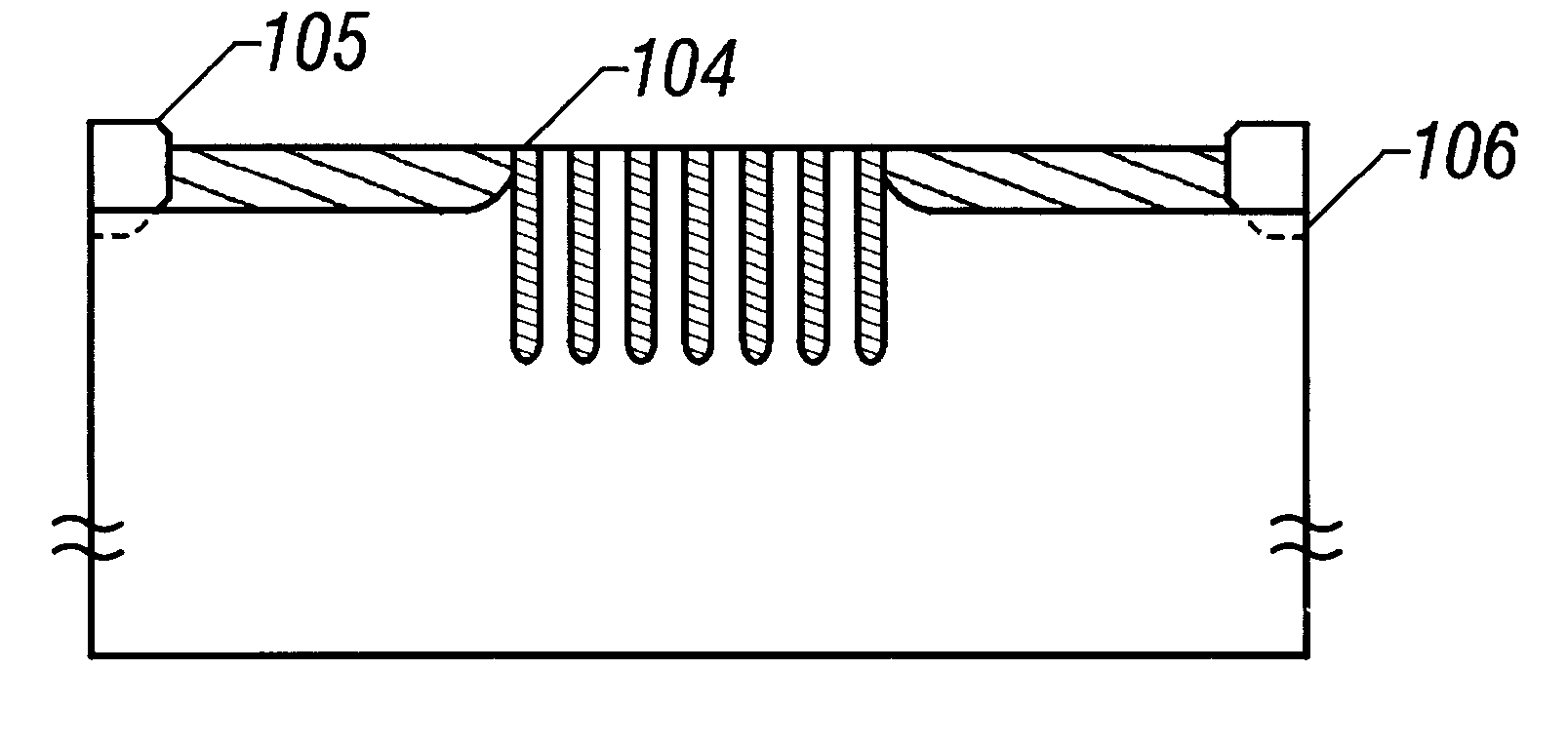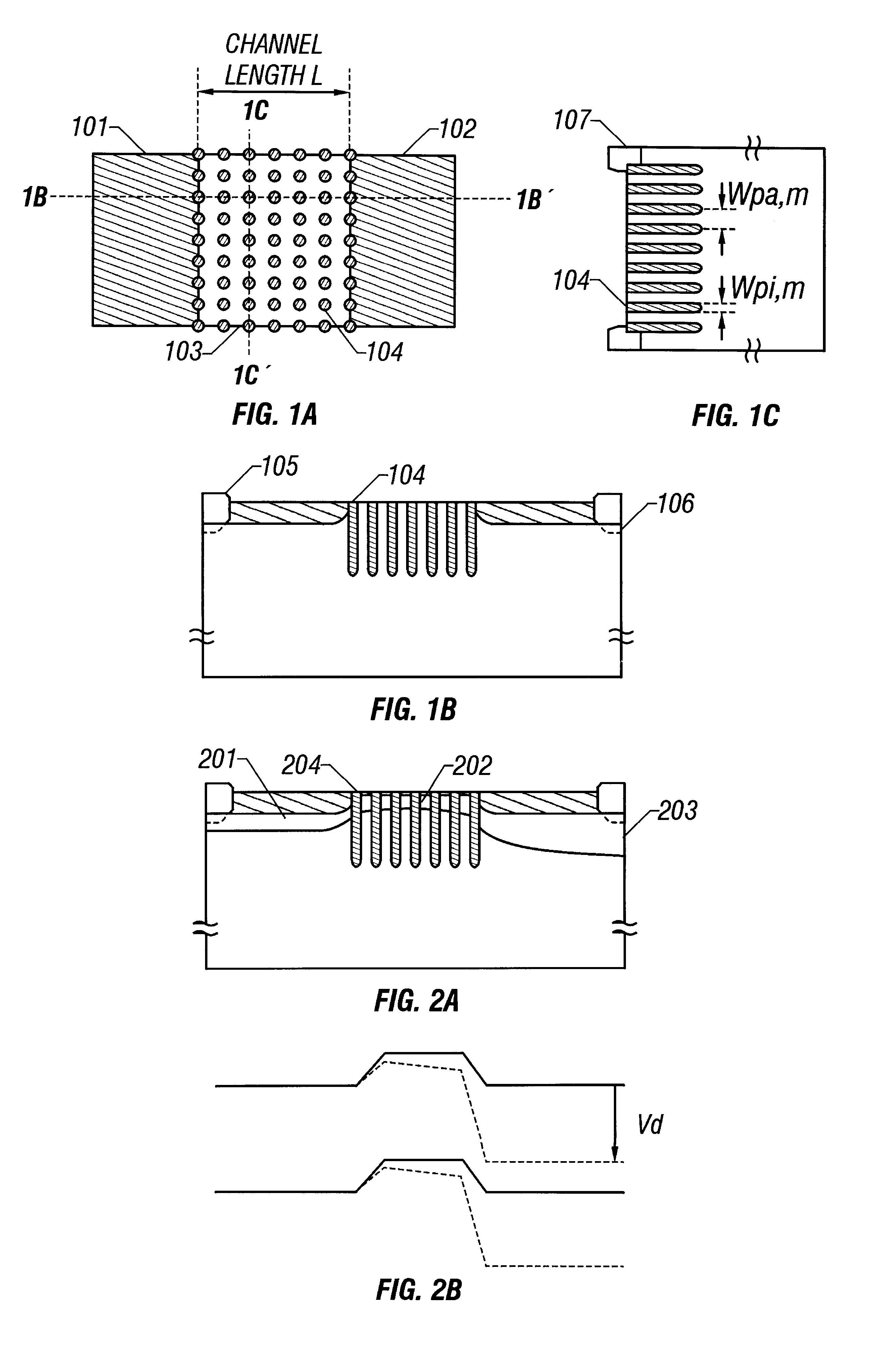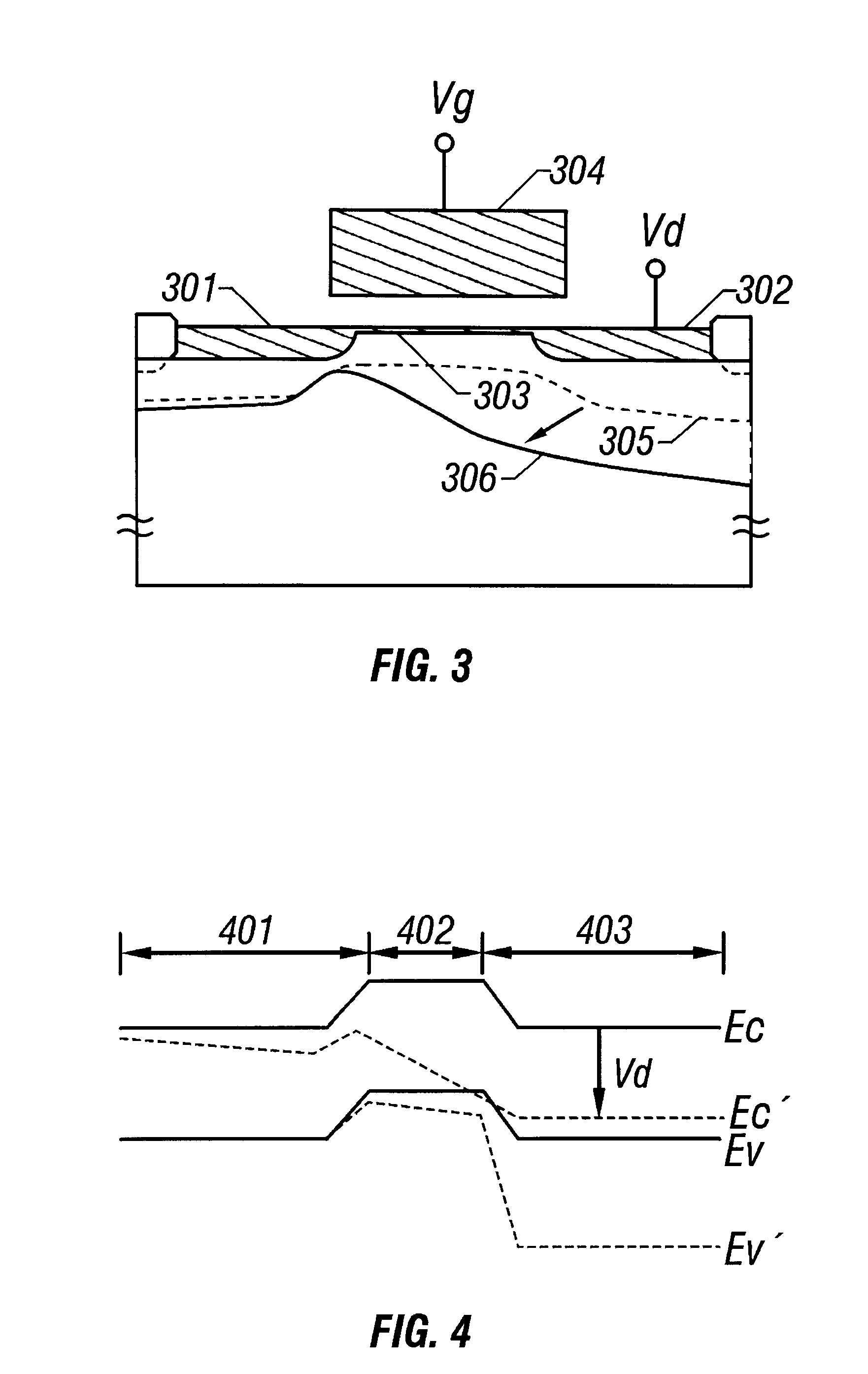Insulated gate semiconductor device and method of manufacturing the same
a technology of insulated gate and semiconductor device, which is applied in the direction of semiconductor devices, electrical appliances, nanotechnology, etc., can solve the problems of difficult control of current flowing in the channel region, deterioration of sub-threshold characteristics, and difficulty in fine machining in the order of sub-microns
- Summary
- Abstract
- Description
- Claims
- Application Information
AI Technical Summary
Problems solved by technology
Method used
Image
Examples
embodiment 1
(Embodiment 1)
An example in which an insulated gate electric field effect transistor is formed on a monocrystal silicon substrate in accordance with the present invention will be described with reference to FIGS. 7A to 7E. In this embodiment, for simplification of description, there is shown an example in which a single n-channel FET is formed on a p-type silicon substrate.
First, reference numeral 701 denotes a p-type silicon substrate on which a silicon oxide film 702 is formed as a pad oxide film on which a silicon nitride film 703 that functions as a mask which will be used later for selective oxidation is further formed. The thickness of the silicon oxide film 702 and the silicon nitride film 703 may be 500 to 2000 .ANG. (FIG. 7A).
Then, patterning is conducted so that the silicon nitride film 703 remains only in the device formation region, and in this state, ions of impurity elements that give p-type conduction are implanted into the silicon nitride film 703. Thereafter, wet ox...
embodiment 2
(Embodiment 2)
In this embodiment, there is shown an example of structuring a CMOS circuit with a complementary combination of an n-channel FET (NMOS) and a p-channel FET (PMOS) in accordance with the present invention. Although the details of a process of manufacturing the CMOS circuit will-be omitted here, the impurity regions shaped in a dot pattern is formed only in the channel forming region before forming the gate insulating film according to the present invention, as was described in the embodiment 1.
FIG. 13A shows a cross-sectional view of a CMOS circuit in accordance with the present invention. FIG. 13A is a cross-sectional view of the CMOS circuit cut along the channel direction, which is formed through a normal manufacturing method.
In FIG. 13A, reference numeral 1301 denotes an n-type silicon substrate, reference numeral 1302 denotes a n-well, and-reference numeral 1303 denotes a p-well. In other words, a p-channel FET (PMOS) is formed on the n-well 1302, and an n-channel ...
embodiment 3
(Embodiment 3)
In the embodiment 1, a depthwise shape of the impurity region 707 is shaped in a bar. However, this is a shape under an ideal state where no scattering occurs when implanting ions. In fact, the impurity regions which are variously shaped can be formed depending on conditions when implanting ions.
For example, an impurity region 901 which is shaped in wedges as shown in FIG. 9A can be formed depending on the conditions where ions are implanted. Also, reversely, an impurity region 902 which is shaped in droplets as shown in FIG. 9B may be formed. In particular, in case of the shape shown in FIG. 9B, the impurity regions adjacent to each other on a lower portion of the impurity region 902 are in contact with each other.
In this state, it can be substantially regarded as an SOI structure where the channel forming region is insulatingly separated from a bulk substrate. This structure can extremely effectively restrain the drain side depletion layer from influencing the deplet...
PUM
 Login to View More
Login to View More Abstract
Description
Claims
Application Information
 Login to View More
Login to View More - R&D
- Intellectual Property
- Life Sciences
- Materials
- Tech Scout
- Unparalleled Data Quality
- Higher Quality Content
- 60% Fewer Hallucinations
Browse by: Latest US Patents, China's latest patents, Technical Efficacy Thesaurus, Application Domain, Technology Topic, Popular Technical Reports.
© 2025 PatSnap. All rights reserved.Legal|Privacy policy|Modern Slavery Act Transparency Statement|Sitemap|About US| Contact US: help@patsnap.com



